The global generative artificial intelligence (GenAI) art market is expected to grow by 42% through 2029, reaching an estimated market size of over $2.5 billion. Given the rapid innovation and democratization of image generators like DALL-E, Midjourney, and the addition of GenAI features to design tools like Adobe Illustrator and Photoshop, AI-generated or partially AI-generated works have already flooded the art market.
Most recently, ChatGPT’s newest version gave users the option to turn photos of themselves into the look of their favorite films from Studio Ghibli, the Japanese studio behind anime movies like “Spirited Away” and “My Neighbor Totoro.” People around the world took to the service recording over 15 million average weekly active users for the first time this year.
However, ChatGPT’s new ability to “ghiblify” inputs sparked the newest wave of debate over GenAI firms’ ability to train systems on artists’ works and to enable users to replicate established art styles at low costs. In February, Christie’s “Augmented Intelligence,” the first-ever AI art sale at a major auction house, came under fire when a public letter calling for its cancellation amassed over 6,500 signatures. In March, more than 400 Hollywood insiders published an open letter to the Trump administration pushing back against Google and OpenAI’s recommendations to the government advocating for exceptions in copyright law for training large language models (LLMs). The group believed the absence of existing guardrails will come at the expense of the creative industry.
Copyright and AI
Under U.S. Copyright Law, a work may be “copyrighted” if it constitutes an “original works of authorship” and is “fixed” in a “tangible form of expression.” The law grants copyright owners the exclusive right to reproduce, distribute, publicly perform and display the works, and to profit from purchases and licensing of their work. Copyright exists automatically in an original works of authorship once it is fixed without registration; however, registration with the Copyright Office provides legal protection to the work in case of litigation.
It is the definition and application of “original works of authorship” that came under fire in the advent of GenAI technologies. In March 2023, to address some of these questions, the office issued guidance on works containing materials generated by AI. Citing Supreme Court rulings and the 1973 edition of the office’s “Compendium of Copyright Office Practices,” the guidance reiterated its long-standing human authorship requirement, dictating that copyrightable works must “owe their origin to a human agent.” In the same report, the Copyright Office announced that it is soliciting public input on the matter, publishing a notice of inquiry on issues of AI and copyright in August 2023.
The office received over 10,000 comments and consolidated its findings into a three-part report, with the third section set to be published in the near future. The second part of the report, which focuses on copyrightability of outputs created using generative AI, maintained that current copyright guidelines are sufficient to regulate copyrightability of AI works, and that outputs wholly generated by AI are not copyrightable.
The report expressly declares that outputs from GenAI systems resulting from human prompt engineering do not satisfy this requirement, as the GenAI model itself would control or determine the output rather than the human prompter. The report also excludes AI-generated elements of a larger, human-authored work from copyright protection. However, the office currently lacks the means to distinguish AI-generated elements from non-AI elements, raising questions about the potential to enforce its provisions without voluntary disclosure from rights seekers.
A related issue that remains unresolved is the application of the Fair Use doctrine in supplying copyrighted data for training GenAI models. The doctrine grants the unlicensed use of copyrighted works for specific purposes, such as teaching, news reporting, commentary, etc. The application of Fair Use hinges on four factors: The purpose, the nature of the copyrighted work, the amount used, and the effect of the use upon the market for or value of the copyrighted work. Given the vast amounts of copyrighted content that have already been solicited without explicit consent, GenAI developers argue that training GenAI models on copyrighted data falls under the Fair Use doctrine. The Copyright Office has yet to clarify its stance, allowing GenAI firms to continue training on copyrighted materials, and leaving copyright owners to battle AI companies through the courts.
Challenges in enforcement
Difficulties in enforcement under this guidance have already emerged. In early 2023, the U.S. Copyright Office rescinded the copyright protection granted to the comic book “Zarya of the Dawn” citing “incomplete information” when it issued the original copyright protection. The office had discovered the use of Midjourney through author’s public announcement regarding the use of prompts to generate images through the latent AI diffusion process. With this information, the new copyright registration excludes the images in the work generated by Midjourney and protects only the “expressive materials that [the author] created” that is “the selection, coordination, and arrangement of the Work’s written and visual elements.”
Though the office was able to quickly update the registration, its inability to distinguish between human-authored and AI-authored work without disclosure is worrisome. For artists seeking copyright protection, they are disincentivized to report elements of AI-authorship understanding that parts of their work would not be protected, especially if they have differing definitions of authorship than the Copyright Office. For instance, an artist, understanding the nuances of collaboration between themselves and the generative model, may perceive generated elements as human-authored rather than AI-generated in the copyright definition, therefore failing to characterize these elements as such when filing for registration. Given the rapid development of GenAI technology and the potential new ways for artists and technology to collaborate, the line between AI-generated versus human-authored portions of work are likely to be further blurred in the near future.
AI and the visual arts: The case for copyright protections
The use of copyrighted materials in training GenAI has sparked significant backlash from artists. The Christie’s auction prompted over 6,500 artists, designers, and academics to sign a public letter demanding its cancellation. The letter argued that AI companies have engaged in “mass theft” by training models on vast amounts of copyrighted material without consent or compensation. In the past two years, at least 16 lawsuits have been filed against almost every major AI company over copyright infringement.
In 2023, several visual artists filled a class action lawsuit against multiple image GenAI firms, arguing that the image generator was “created to facilitate that infringement by design.” By August 2024, the district court ruled that the artists may pursue claims that Stability AI, Midjourney, DeviantArt, and Runway’s image-generation systems infringe upon their copyright protections, but the decision did not address questions on whether training on copyrighted works should be protected under the Fair Use doctrine.
For visual artists, the tension between artistic value and legal authorship is particularly pronounced. Some artists described that filing copyright complaints against AI companies feels like they are “David against Goliath,” where tech companies profit from AI-generated replicas of their work while they struggle to pay rent. The commercial success of AI-generated artworks, such as “Machine Hallucinations” fetching over $270,000 at the Christie’s auction, highlights the growing contradiction: while legal frameworks deny AI-generated works copyright protection due to the absence of human authorship, the art market continues to assign them significant monetary value.
In the past, artists have sought copyright for their work to safeguard the financial value of their work, yet given the present art and copyright landscape, artists may be reluctant to create new works fearing free riders on their creative labor. Additionally, since the cost of creating AI-generated art is near zero, artists may be incentivized to create noncopyrightable works for great financial pay offs. This shift challenges the traditional function of copyright as a safeguard for artistic labor, raising concerns about whether current laws and guidance can adequately protect human creators in an era where AI-generated works are highly profitable and legally unprotected. If financial success no longer depends on securing copyright protection, human “original authorship” may lose its value as AI-generated content becomes more cost effective, and the foundational purpose of copyright is thrown into question.
Without intervention and proper enforcement mechanisms of existing copyright laws, the unchecked rise of AI-generated content risks creating a system that systematically devalues human creative work and prioritizes technological novelty rather than human ingenuity. The Copyright Office must acknowledge these risks and adapt its policies and enforcement strategies to ensure human authorship remains both legally and economically viable in the evolving art market.
One potential solution may be establishing a new category of copyright, tailored specifically for human-AI collaborative work. Though the Copyright Office does not see any present incentives to do so, such a category could account for the increasingly nuanced and complex ways artists interact with GenAI tools, allowing for meaningful recognition of human creative direction while accommodating technological assistance. This flexible approach would help preserve the value of human authorship and accommodate new modes of collaboration.
Implications on policy
Little has been done on the legislative front to tackle copyright in the United States. The lack of provisional clarity on the data mining of copyrighted materials in the training process enables tech companies to take advantage of the gap between legal frameworks and market realities, and to continue training on copyright-protected data without compensating original creators.
As GenAI models continue to proliferate in the market, the current gray area on training copyrightable data could result in increased economic insecurity for creators, who may fear their work is being actively extracted to train GenAI models. The absence of legislative directives may prompt some artists to safeguard their work from public view, therefore contradicting part of the purpose of copyright protection, which is to “foster the creation and dissemination of works for the benefit of the public.” The sooner Congress can address these gaps, the better the government can effectively balance the innovation with fair compensation and protection of human artists. Though the courts will play a pivotal role in determining fair use on a case-by-case basis, general directives from policymakers can create a more unified narrative for the courts and eliminate inefficiency.
The additional pressure on the global regulatory landscape remains in flux with countries in Europe and the Asia-Pacific considering their own policies. Though there appears to be some agreement on restricting copyright for AI-generated artworks, there is substantial diversity in specific national policies. For example, the United Kingdom grants copyright in computer-generated works to whoever undertook the arrangements for the creation, while China recognizes copyright if the prompts are sufficiently detailed. There is also a spectrum of ideas on the regulation around text and data mining copyright content for training purposes. U.S. leadership on this front could encourage more global dialogue on this area, especially since sourcing of training data is not bound by territorial boundaries. Global alignment and clarity on this question would allow both tech companies and artists to better understand their rights and the future directions of their work, resulting in greater productivity and efficiency in both markets.
Looking ahead
As AI-generated art continues to reshape the creative landscape, the legal and economic challenges surrounding copyright, authorship, and enforcement will only grow more complex. Ongoing lawsuits, reactions from artists, and market shifts highlight the struggle to define human authorship and protect artists’ rights in an era where AI-generated works hold significant commercial value, but lack clear copyright protections. With increasing pressure on legislative and regulatory bodies to address these issues, the future of AI-generated art will depend on policies that balance innovation with fair compensation and safeguards for human creativity.
While we await the final part of the Copyright Office’s report, which will determine the legal implications of training AI on copyrighted data, the more pressing determinant of fair use in GenAI training may come from the courts. Yet, regardless of the outcome, the Copyright Office should transcend its passive regulatory guidance and actively develop new mechanisms to distinguish human-authored elements from AI-generated ones to enforce its present guidance. In addition, the office must think creatively about flexible frameworks that can account for future, more nuanced and complex modes of collaboration between human and GenAI systems. This may require stronger disclosure requirements, improved detection methods, and a reexamination of what constitutes meaningful human authorship in an increasing AI-involved creative process.
Further, artists, tech companies, and policymakers must be brought to the table to ensure copyright law reflects the newest collaborations in AI and art, protects human creativity, and accommodates technological progress. Without safeguards, the rapid influx of AI into the art market could lead to a systemic devaluation of human original authorship and growing precarity in the creative field. The future of AI-generated art hinges on such governance.
-
Acknowledgements and disclosures
We are grateful for the research assistance of Josie Stewart at the Brookings Institution.
Google is a general, unrestricted donor to the Brookings Institution. The findings, interpretations, and conclusions posted in this piece are solely those of the authors and are not influenced by any donations.
The Brookings Institution is committed to quality, independence, and impact.
We are supported by a diverse array of funders. In line with our values and policies, each Brookings publication represents the sole views of its author(s).
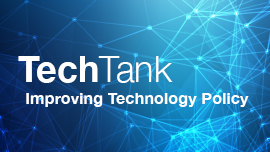
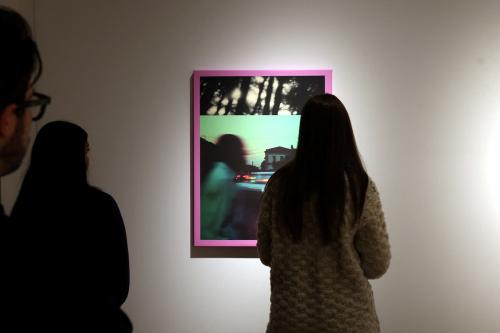
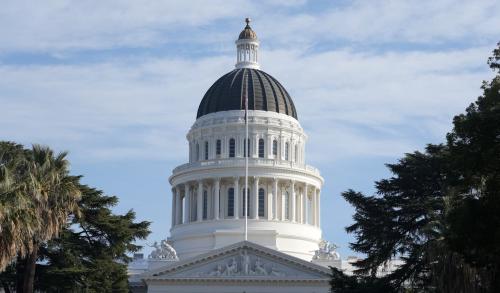
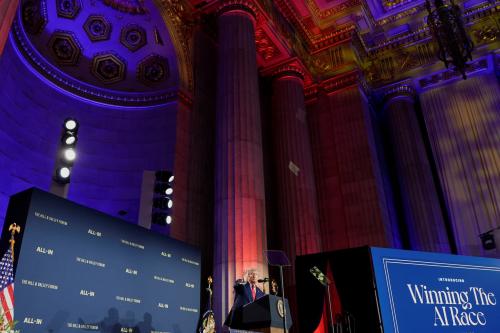


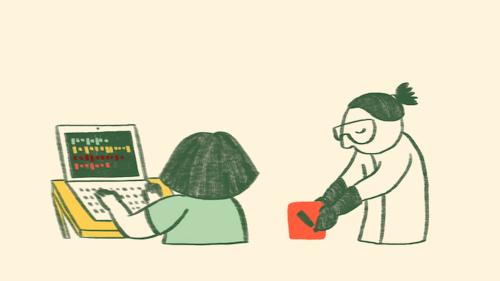
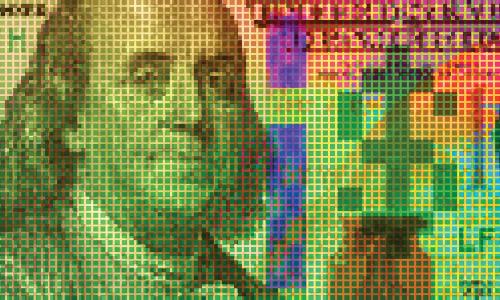
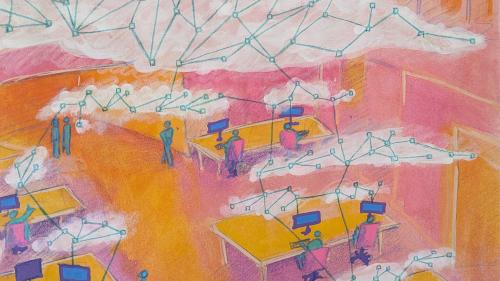
Commentary
AI and the visual arts: The case for copyright protection
April 18, 2025